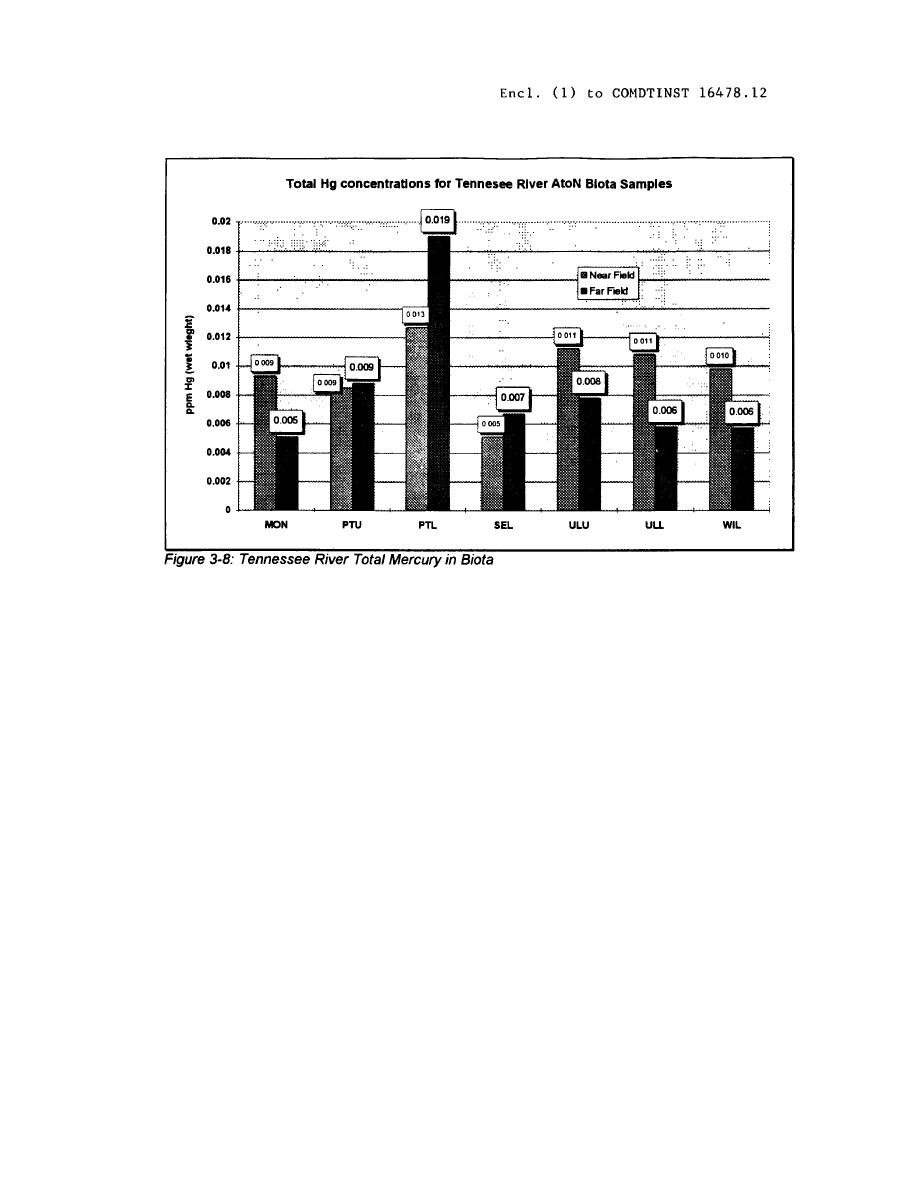
Puget Sound
The concentrations of metals showed no increase with proximity to batteries
and were similar at lighted and unlighted AtoNs. Average mercury and zinc
sediment levels at AtoNs were similar to performance standards established in
the Puget Sound Estuary Program for Puget Sound reference sites (i.e.
uncontaminated sites) and background data from nearby areas in Budd Inlet no
influenced by batteries. The highest concentrations of metals measured at
the AtoN sites in Budd Inlet were well within the range of mercury and zinc
measured a typical sites in Puget Sound, and even the highest concentrations
observed were well below state standards for sediment mercury and zinc.
The sediment concentrations of mercury and zinc were below the levels at
which ecological impacts to benthic infauna are considered "likely" to cause
effects. (Long and MacDonald, 1992) There were areas where concentrations
exceed levels reported in the literature to cause possible effects. The
exceedances occurred at all sites, including the reference site ULO. Since
the exceedance of the most conservative benchmarks was measured at the
reference site, any effects due to mercury cannot be directly attributed to
batteries. Based upon the low total and methyl mercury levels, the risk to
benthic infauna, if any, is minimal and is apparently not attributable to
AtoN batteries.
3-8




 Previous Page
Previous Page
